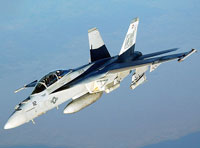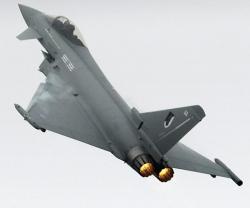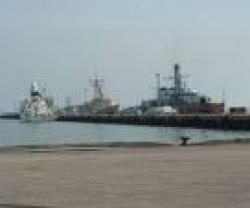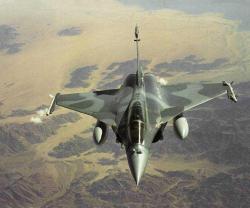Raytheon: New Milestones on Super Hornet’s Avionics Systems
31.07.2012 North America
Raytheon has achieved important milestones on 3 F/A-18E/F related programs, highlighting the company's ongoing, successful support of the Super Hornet aircraft.
Raytheon recently delivered the 300th APG-79 active electronically scanned array (AESA) radar to Boeing for integration on F/A-18E/F Super Hornets and EA-18G Growlers.
Raytheon has also delivered the 600th ALR-67(V)3 radar warning receiver, marking six years of continual on-time delivery of that system.
Additionally, Raytheon's Advanced Targeting Forward Looking Infrared (ATFLIR) pod has reached 1 million F/A-18 operational flight hours.
“Raytheon radar, electronic warfare and targeting systems are integral components to the success of the Super Hornet, and we are proud of the long history of performance we have demonstrated with the platform. Raytheon understands the unique challenges represented in building systems for carrier-based aircraft, and we incorporate that knowledge into every product we develop for the F/A-18,” said Mark Kula, Vice President of Tactical Airborne Systems for Raytheon's Space and Airborne Systems business.
Raytheon fielded the world's first operational AESA radar in 2000 and is the only manufacturer with combat-proven AESAs in production for tactical aircraft today. In operation on the Super Hornet since 2007, the APG-79 provides far greater performance and reliability than mechanically scanned array radars.
The ALR-67(V)3 is the U.S. Navy's standard for radar warning receivers and is an integral part of the Super Hornet's electronic warfare self-defense system, giving pilots unmatched situational awareness against potential enemy threats. Earlier this year, Raytheon was awarded a $77 million contract modification to deliver ALR-67(V)3 systems to the Navy as part of full-rate production Lot 14.
The ATFLIR pod delivers all-weather pinpoint accuracy and reliability for air-to-air and air-to-ground mission support, enabling aviators to perform their missions in the harshest conditions with maximum efficiency and security. Its plug-and-play performance allows for easy installation and seamless operation, for enhanced interoperability with coalition forces.
Raytheon recently delivered the 300th APG-79 active electronically scanned array (AESA) radar to Boeing for integration on F/A-18E/F Super Hornets and EA-18G Growlers.
Raytheon has also delivered the 600th ALR-67(V)3 radar warning receiver, marking six years of continual on-time delivery of that system.
Additionally, Raytheon's Advanced Targeting Forward Looking Infrared (ATFLIR) pod has reached 1 million F/A-18 operational flight hours.
“Raytheon radar, electronic warfare and targeting systems are integral components to the success of the Super Hornet, and we are proud of the long history of performance we have demonstrated with the platform. Raytheon understands the unique challenges represented in building systems for carrier-based aircraft, and we incorporate that knowledge into every product we develop for the F/A-18,” said Mark Kula, Vice President of Tactical Airborne Systems for Raytheon's Space and Airborne Systems business.
Raytheon fielded the world's first operational AESA radar in 2000 and is the only manufacturer with combat-proven AESAs in production for tactical aircraft today. In operation on the Super Hornet since 2007, the APG-79 provides far greater performance and reliability than mechanically scanned array radars.
The ALR-67(V)3 is the U.S. Navy's standard for radar warning receivers and is an integral part of the Super Hornet's electronic warfare self-defense system, giving pilots unmatched situational awareness against potential enemy threats. Earlier this year, Raytheon was awarded a $77 million contract modification to deliver ALR-67(V)3 systems to the Navy as part of full-rate production Lot 14.
The ATFLIR pod delivers all-weather pinpoint accuracy and reliability for air-to-air and air-to-ground mission support, enabling aviators to perform their missions in the harshest conditions with maximum efficiency and security. Its plug-and-play performance allows for easy installation and seamless operation, for enhanced interoperability with coalition forces.
Previous PostFrench DGA Takes Delivery of 2 Eurocopter NH90s
Latest news
Latest events
I/ITSEC 2024
02 - 06 Dec 2024Orlando, Florida - United Statesintersec 2025
14 - 16 Jan 2025World Trade Centre (WTC) Dubai - United Arab EmiratesIDEX & NAVDEX 2025
17 - 21 Feb 2025Abu Dhabi National Exhibition Centre - ADNEC - United Arab EmiratesDefence Exhibition Athens - DEFEA
06 - 08 May 2025Metropolitan Expo Athens - Greece





















